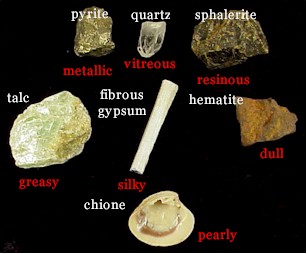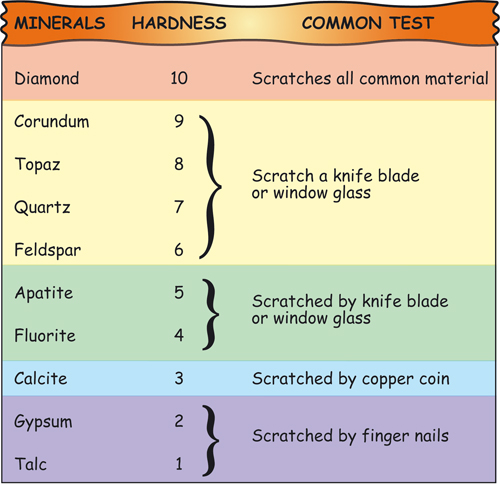How to recognize minerals
The most common minerals properties used to
identify hand specimen are the crystal form, color, streak,
Luster, hardness, density and cleavage (fracture and
parting).
1. Crystal form
Minerals are grouped into systems according to their crystal
symmetry (regularity of form). The figure below shows the six
main systems.

2. Color
Some minerals have more than one color for example; purple
amethyst and yellow citrine are both varieties of quartz. In
contrast, yellow is the only color of sulfur and is therefore a
useful tool in identifying this mineral.
3. Streak
The streak is the color of the powder made by crushing a
mineral. For example, hematite could take different forms and
color but its streak is always reddish brown.
4. Luster
It’s the way light reflects off the surface of a
mineral. For example, pyrite and many sulfides have a metallic
luster because they reflect most of the light hitting their
surfaces.

Terms for luster are shown in red. This image is from the web page of the Geological Sciences department of University of San Diego.
5. Hardness
We measure the hardness of a mineral by how easy we can
scratch it using different tools like finger nails, piece of
glass and piece of copper (usually a penny).

6. Density
The density is measure by comparing the weight of a sample
with the weight of an equal volume of water. Density is one of
the tools to help identify galena, which has a very high density
(7.58 g/cc) and talc, which has a low density (2.7 g/cc).
|